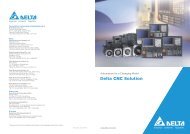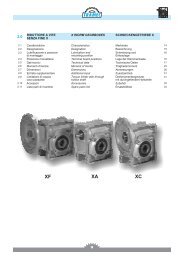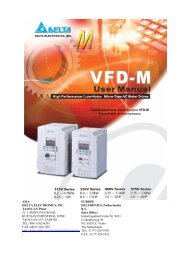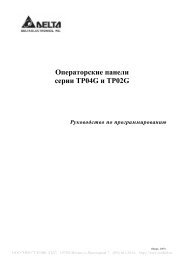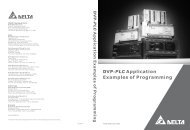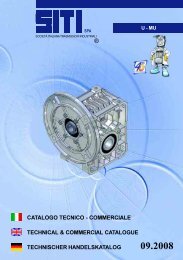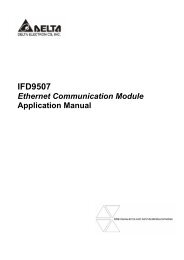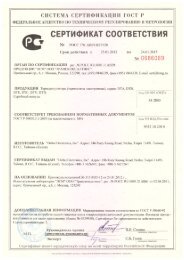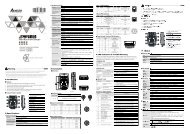Medium Voltage Application Guide
Medium Voltage Application Guide
Medium Voltage Application Guide
Create successful ePaper yourself
Turn your PDF publications into a flip-book with our unique Google optimized e-Paper software.
13531.A<br />
SOFT STARTERS<br />
Slip ring motor control<br />
The principle of a slip-ring motor is that external rotor resistance provides the necessary motor torque during<br />
acceleration to full speed. Once the motor is close to full speed, the external rotor resistance is shorted out and the<br />
motor operates as a standard three phase induction motor.<br />
Old slip-ring motor systems typically consist of a liquid resistance tank with an electrode, or else a series of cast-iron<br />
or wire wound resistor banks with a changeover switch. These systems require mechanical intervention for motor<br />
starting, can become mechanically unreliable, and require regular maintenance.<br />
AuCom medium voltage soft starters include a unique function specifically for slip-ring motor control. This function<br />
is not suitable for applications where a slip-ring motor is being used for speed control or to develop excess start<br />
torque (ie more than 100% motor full load torque to break away).<br />
Some rotor resistance is required in order to start the motor. This rotor resistance (R1) is shorted when the motor<br />
is close to full speed, using rotor resistance contactor K3. The contactor must be AC2 rated for the nameplate<br />
rotor current.<br />
AuCom medium voltage soft starters use a "Dual Ramp" start function. This provides a voltage ramp with constant<br />
current control while the rotor resistance is in the circuit. This is followed by a smooth transition when shorting out<br />
the rotor resistance. A second voltage ramp with constant current control is provided for acceleration to full<br />
running speed.<br />
Typical slip-ring motor starting system using a soft starter for control<br />
R1<br />
M1<br />
M<br />
3<br />
T1<br />
T2<br />
SST<br />
L1<br />
L2<br />
K1<br />
1<br />
T3<br />
L3<br />
K3<br />
K2<br />
Mains supply R1 Rotor resistance (single stage)<br />
K1 Main contactor SST Soft starter<br />
K2 Bypass contactor M1 Slip ring (wound rotor) motor<br />
K3 Rotor resistance contactor<br />
Operating sequence<br />
NOTE<br />
The rotor resistance must be engineered to provide the necessary acceleration torque during motor<br />
starting. This example assumes a soft starter which offers a dedicated slip-ring motor control function<br />
(eg AuCom MVS or MVX).<br />
Starting control sequence<br />
1. The soft starter SST is given a start command and main contactor K1 closes.<br />
2. The soft starter performs a series of prestart checks, then ramps up to full voltage using Ramp 1<br />
3. Once the rotor has reached a constant speed, the voltage on the output of the soft starter SST is backed off and<br />
rotor resistance contactor K3 closes, shorting out rotor resistance R1.<br />
4. The output of the soft starter SST is ramped-up to full voltage using Ramp 2, accelerating the motor to full<br />
speed.<br />
5. Bypass contactor K2 closes and the starting sequence is complete.<br />
Page 66 <strong>Medium</strong> <strong>Voltage</strong> <strong>Application</strong> <strong>Guide</strong> 710-12280-00A






